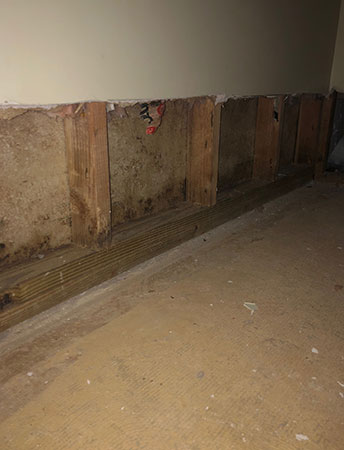A/C Mold Remediation Providers
Residential A/C Mold Removal Solutions
A Plus Enviro-Services residential air duct and vent cleansing experts are qualified and trained in property duct cleansing and HVAC system mold cleaning and restoration. We supply customized residential HEATING AND COOLING duct and vent cleaning, mold removal, and other cleaning services. Our objective is to provide affordable, instructional, sincere, local and high quality assistance to our domestic customers by enhancing their indoor air quality, energy efficiency, and security. Did you understand air-borne contaminants are pulled into the air ducts each time the heating & cooling system runs. With time, these impurities increase inside the ductwork, forming a perfect breeding ground for mold, bacteria, fungi, and other microorganisms.
How We Do It
The existence of microbial growth (mold) in an A/C system is a typical issue and a range of elements can contribute to the microbial growth. The HVAC system, including piping and drain pans, can be sources of http://query.nytimes.com/search/sitesearch/?action=click&contentCollection®ion=TopBar&WT.nav=searchWidget&module=SearchSubmit&pgtype=Homepage#/Mold inspection microbial growth. An elevated mold condition can cause many different negative effects with the most typical issue being allergy signs. The goods new is that generally mold contamination in A/C systems and air vents are confined to little locations.
Cleaning up is usually not extremely intricate. Do not waste your cash with unqualified business and scammers. Call us for a complimentary and instructional estimate today. Strong Acid Water Sanitizer A Plus Enviro-Services utilizes a strong acidic water as a sterilizing representative due to the fact that it's organic, entirely safe for human beings, family pets, and the environment. This strong Acidic Water is an electrolytic water with electric potential, which indicates that its chemical decomposition is produced by passing an electrical current through a liquid or solution including ions. This includes the hypochlorous acid (SDS) produced from an anode when electrolysis happens. It is made by applying an electrolysis enhancer to tap water, this in itself is not a chemical.
Strong Acidic Water 2.5 pH works as an antifungal, antibacterial, and an antiviral agent. This water eliminates bacteria within an average of 30 seconds, and due to the fact that of this the water is stronger than popular disinfectants and it has multi-purpose use. Strong Acidic water was approved for sanitizing food products in June 2002, in accordance with the Food Hygiene Law, under the name hypochlorous acid water.
Learn More Why Pick United States A Plus Enviro Solutions Inc. DBA Air Duct Cleaning Plus is completely licensed, bonded and guaranteed. What our consumers are saying We can extremely recommend them as an extremely friendly and professional contractor who helped us enormously with a recent evaluation of our house's air duct/vent system.

Indoor mold Wikipedia
Fungal development that establishes on damp materials Indoor mold on the head jamb of the window in a multi-storey structure. Mold (American English) or mould (British English), also often referred to as mildew, is a fungal growth that establishes on damp products. Mold is a natural part of the environment and plays an important part in nature by breaking down dead organic matter such as fallen leaves and dead trees; indoors, mold development must be avoided. Mold reproduce by means of tiny spores. The spores resemble seeds, but unnoticeable to the naked eye, that float through the air and deposit on surface areas. When the temperature, wetness, and available nutrient conditions mold remediation in basement are proper, the spores can form into new mold colonies where they are deposited.
Exposure to high levels of mycotoxins can result in neurological issues and death. Extended direct exposure (for instance, day-to-day direct exposure) can be especially harmful. Mycotoxins can continue the indoor environment even after death of the fungis. They can adhere to dust particles and can spread out through the air connected to these dust particles or spores. [3] There need to be very particular temperature level and official website humidity conditions in order for fungis to produce mycotoxins.
Symptoms [modify] Symptoms of mold direct exposure may consist of nasal and sinus blockage; runny nose, eye irritation; scratchy, red, watery eyes, respiratory issues, such as wheezing and problem breathing, chest tightness, cough, throat irritation, skin inflammation (such as a rash), headache, and persistent sneezing.
Immune-compromised individuals and people with chronic lung illnesses, such as obstructive lung illness, might get serious infections in their lungs when they are exposed to mold. These people ought to stay away from locations that are likely to have mold, such as compost heap, cut turf, and wooded locations.
Asthma [edit] Babies may establish respiratory symptoms as a result of exposure to Penicillium, a fungal genus. Indications of mold-related breathing problems in a baby consist of a consistent cough or wheeze. Increased exposure increases the likelihood of developing breathing signs during the first year of life. Research studies have suggested a connection in between the probability of developing asthma and direct exposure to Penicillium.
Causes and growing conditions [modify] Mold is discovered everywhere and can grow on nearly any compound when moisture exists. They reproduce by spores, which are carried by air currents. When spores arrive on a wet surface ideal for life, they begin to grow. Mold is usually found inside at levels which do not impact most healthy people. Due to the fact that typical structure materials are capable of sustaining mold development and mold spores are ubiquitous, mold development in an indoor environment is generally connected to water or wetness exposure and may be brought on by insufficient drying of floor covering products (such as concrete). Flooding, leaking roofings, building-maintenance or indoor-plumbing problems can result in interior mold development. Water vapor frequently condenses on surfaces cooler than the moisture-laden air, making it possible for mold to flourish. [citation needed] This moisture vapor passes through walls and ceilings, generally condensing during the winter in climates with a long heating season. Floors over crawl spaces and basements, without vapor barriers or with dirt floorings, are mold-prone. The "doormat test" identifies wetness from concrete pieces without a sub-slab vapor barrier.